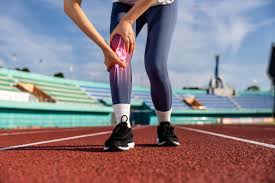- Published Date: 22-01-2025

Sports injuries are a common occurrence for athletes of all levels, from weekend warriors to professional competitors. Understanding these injuries is crucial for ensuring timely and effective treatment, which ultimately leads to safe recovery and continued participation in one's sport.
This article aims to explore the different types of sports injuries, outline signs indicating the need for surgery, discuss non-surgical treatment options, and highlight considerations when consulting with a specialist.
Injuries come in various forms, and recognizing them can aid in determining the appropriate treatment.
A. Sprains and Strains
Sprains involve the stretching or tearing of ligaments, while strains refer to injuries of muscles or tendons. Both injuries can occur in any sport and are among the most prevalent types.
B. Fractures
Fractures occur when bones break due to direct impact or overuse. Common locations for fractures in athletes include the arms, legs, and wrists, often requiring immediate medical attention for proper diagnosis and care.
C. Tendon Injuries
Tendon injuries, such as Achilles tendonitis or rotator cuff injuries, often stem from repetitive stress or sudden trauma. These injuries can significantly impact athletic performance and daily activities.
D. Ligament Injuries
Ligament injuries, particularly anterior cruciate ligament (ACL) and medial collateral ligament (MCL) tears, are frequent among athletes. These injuries typically result from sudden stops, changes in direction, or impact.
E. Cartilage Damage
Cartilage damage can lead to joint pain and dysfunction, often resulting from trauma or degenerative conditions. It is crucial to have such injuries evaluated by a medical professional to determine the extent of the damage.
While many sports injuries can be treated effectively with non-surgical methods, certain signs indicate that surgical intervention may be necessary.
A. Persistent Pain Despite Treatment
If pain persists despite conservative treatment efforts, it may signal a more serious issue. Pain management techniques, including physical therapy and medications, can often alleviate discomfort. However, continuous pain is a red flag that warrants further investigation.
B. Loss of Function or Mobility
Inability to perform basic movements or loss of range of motion are significant indicators of a severe injury. For example, if an athlete cannot pivot or jump properly, it may be necessary to consult a specialist.
C. Swelling and Inflammation
Chronic swelling and inflammation can point to underlying problems, such as ligament tears or tendon injuries. Monitoring these symptoms is vital, as they can affect overall function and performance.
D. Diagnosis from a Medical Professional
A precise diagnosis is critical and often involves imaging studies such as X-rays or MRIs. These tools help assess the injury's severity and can guide treatment options. Seeking a second opinion can also provide clarity and ensure that the best course of action is taken.
Before considering surgery, many non-surgical treatment options can effectively manage sports injuries.
A. Rest and Ice
One of the most straightforward yet effective treatments is giving the injured area time to heal. Rest combined with ice application can significantly reduce swelling and pain, facilitating recovery.
B. Physical Therapy
Physical therapy plays a crucial role in rehabilitation, helping to restore strength, flexibility, and range of motion. Tailored exercise programs can aid in injury recovery and help prevent future injuries.
C. Medications
Non-steroidal anti-inflammatory drugs (NSAIDs) and corticosteroids can help manage pain and reduce inflammation. These medications may be recommended as part of a comprehensive approach to recovery.
D. Activity Modifications
Modifying activities to avoid further strain on the injured area can be vital for recovery. This may include adjusting training routines, avoiding specific movements, or temporarily changing sports.
E. When Non-Surgical Methods Are Effective
Many injuries respond well to non-surgical treatments, and improvement is often seen without the need for invasive procedures. It's essential to follow a disciplined recovery plan to maximize healing potential.
Consulting with a medical specialist is essential for an appropriate diagnosis and treatment.
A. Types of Specialists
Orthopedic surgeons and sports medicine doctors are among the specialists who can provide expert care for sports injuries. Understanding each's expertise is vital in selecting the right professional to address your specific injury.
B. Importance of Proper Diagnosis
A thorough assessment, including a medical history, physical examination, and imaging studies, is necessary to determine the injury's nature and severity. A proper diagnosis is the foundation for an effective treatment plan.
C. What to Expect During a Consultation
During a consultation, the specialist will evaluate your condition, discuss treatment options, and help you establish a recovery plan. They may also address any questions or concerns you have, ensuring you have a clear understanding of the proposed approach.
Choosing to undergo surgery is a significant decision that should not be taken lightly.
A. Risks and Benefits of Surgical Intervention
It’s crucial to weigh the potential risks, such as infection or complications, against the benefits, including improved function and the possibility of returning to full activity.
B. Recovery Time and Rehabilitation
Surgery often requires extensive rehabilitation and recovery time, which may take weeks or months. Understanding the expected timeline will help set realistic goals for returning to activity.
C. Long-Term Effects on Athletic Performance
Consider how surgery may impact your long-term athletic performance. While many athletes return to play successfully, some may experience lingering issues that affect their competitive edge.
D. Personal Goals and Lifestyle Factors
Ultimately, personal goals and lifestyle factors should guide your decision. Whether you aim to compete professionally or enjoy recreational sports, your passion and commitment to recovery will play a significant role in achieving your desired outcomes.
Understanding sports injuries and their treatment options is crucial for athletes looking to maintain their performance and overall well-being. By recognizing the signs of when surgery may be needed, exploring non-surgical options, and consulting with specialists, you can make informed decisions that support a safe and effective recovery. Whether through diligent rehabilitation or surgical intervention, the goal remains the same: to return to the activities you love as swiftly and safely as possible.